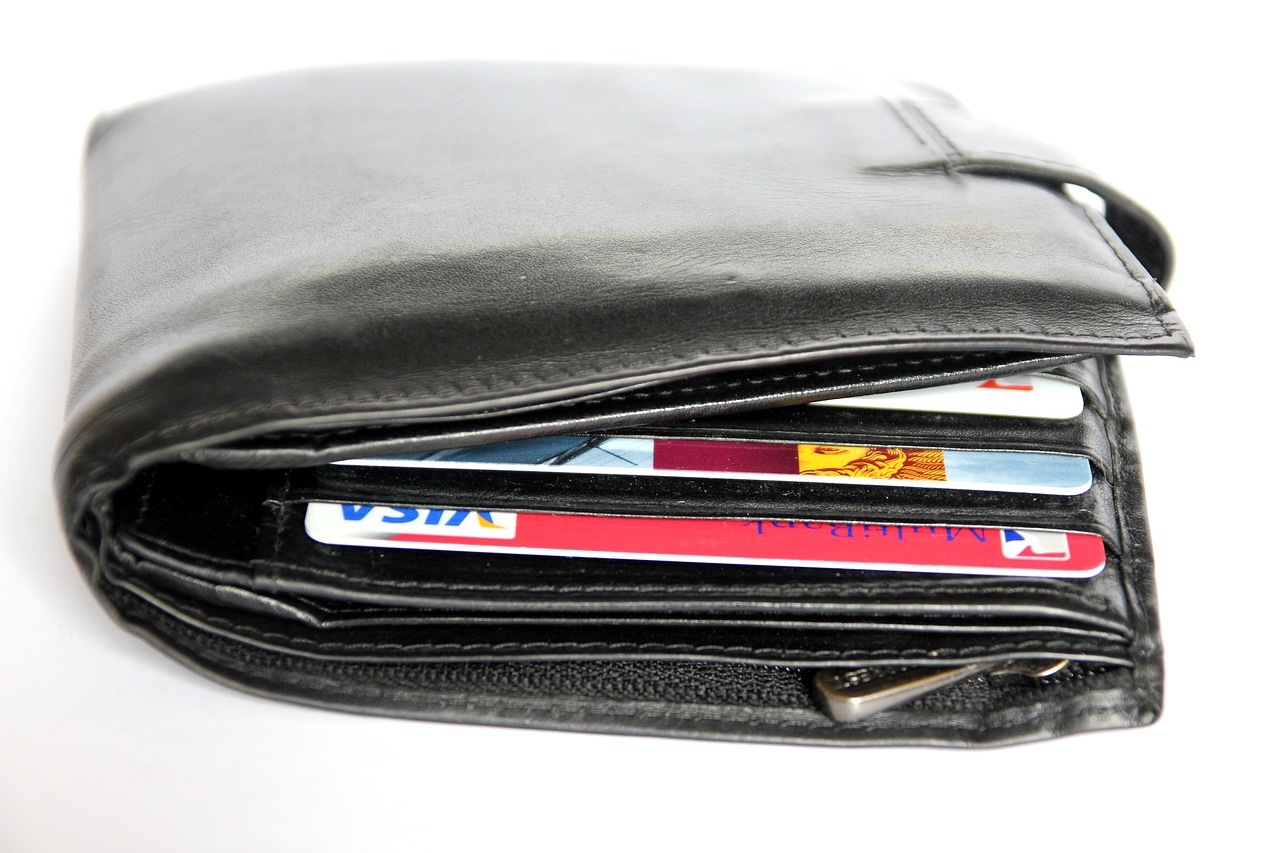The Benefits of Using Wallets for Educational Institutions
In today's fast-paced world, educational institutions are constantly seeking innovative solutions to enhance their operations and improve the student experience. One such solution that has gained significant traction is the implementation of digital wallets. These digital tools not only simplify financial transactions but also bring a plethora of benefits that can revolutionize the way institutions manage their finances and engage with students. From enhanced financial management to improved student engagement, digital wallets are paving the way for a more efficient and connected educational environment.
Digital wallets offer educational institutions a streamlined approach to manage finances, reducing the cumbersome process of cash handling. Imagine a world where schools and universities can track their transactions in real-time, leading to better budgeting and financial planning. With digital wallets, institutions can monitor their income and expenses with just a few clicks, ensuring that every dollar is accounted for. This not only saves time but also minimizes the risk of errors that can occur with traditional cash handling methods.
One of the most exciting aspects of digital wallets is their ability to enhance student engagement. By facilitating easy access to funds for activities, events, and purchases, these wallets encourage students to participate more actively in campus life. Whether it's buying tickets for a concert, paying for a club membership, or simply grabbing a coffee between classes, digital wallets make transactions seamless and hassle-free. This ease of use fosters a sense of community within the institution, as students feel more connected and involved.
Imagine rushing to class and realizing you forgot your wallet at home. With digital wallets, students can make quick transactions without the need for cash or physical cards. This convenience not only makes campus life more efficient but also enhances the overall student experience. No more fumbling for change or waiting in long lines to pay for services; everything is just a tap away. This level of accessibility allows students to focus on what truly matters: their education.
One of the standout features of digital wallets is their ability to process transactions instantly. Gone are the days of waiting in line while a cashier processes payments. With digital wallets, students can complete transactions in mere seconds, reducing wait times and improving the overall experience. This means more time for learning and less time worrying about payment methods. It's a win-win situation that enhances the educational experience.
Digital wallets are designed with inclusivity in mind. Many platforms come equipped with accessibility features that cater to diverse student needs, ensuring that all students can effectively utilize the financial tools available to them. This commitment to accessibility not only promotes equality but also empowers every student to take control of their financial activities.
Managing tuition, fees, and other expenses can often be a daunting task for students and parents alike. However, digital wallets simplify these payment processes, making it easier for families to manage their financial obligations. With just a few clicks, tuition payments can be made, fees can be settled, and even donations can be processed. This streamlined approach not only saves time but also reduces the stress associated with financial management.
In an era where data breaches and fraud are rampant, security is a top priority for both institutions and students. Using digital wallets significantly increases security by reducing the risks associated with carrying cash. These platforms often employ advanced encryption methods to protect sensitive financial information, ensuring that data remains confidential. This peace of mind allows students and institutions to focus on education rather than worrying about potential threats.
Digital wallets often include advanced security measures such as biometric authentication and transaction alerts. This means that students can rest easy knowing that their finances are protected against fraud and unauthorized access. Additionally, institutions can monitor transactions in real-time, allowing them to quickly identify any suspicious activity and take appropriate action.
Educational institutions can ensure data privacy through digital wallets, as these platforms typically comply with stringent regulations. This compliance protects sensitive information from breaches and ensures that students' personal and financial data remains secure. By prioritizing data privacy, institutions can build trust with their students and foster a safe learning environment.
Implementing digital wallets can be a cost-effective solution for educational institutions. The overhead costs associated with traditional payment methods and administrative processes can quickly add up. However, digital wallets often incur lower transaction fees compared to traditional banking methods, allowing institutions to allocate funds more effectively toward educational initiatives. This financial efficiency not only benefits the institution but also enhances the overall learning experience for students.
With digital wallets, institutions can enjoy reduced transaction fees, which means more resources can be directed toward improving educational programs and facilities. This is a crucial advantage for schools and universities looking to maximize their budgets and provide the best possible experience for their students.
By automating payment processes, digital wallets enhance operational efficiency. This automation frees up staff resources, allowing them to focus on more strategic tasks rather than manual financial management. Institutions can streamline their operations, improve productivity, and ultimately create a better educational environment for everyone involved.
- What are digital wallets? Digital wallets are electronic applications that allow users to store and manage their payment information securely.
- How do digital wallets enhance student engagement? They provide easy access to funds for various activities, encouraging participation and a sense of community.
- Are digital wallets secure? Yes, they utilize encryption and advanced security measures to protect users' financial information.
- Can digital wallets reduce costs for educational institutions? Absolutely! They often incur lower transaction fees and improve operational efficiency.

Enhanced Financial Management
This article explores the advantages of implementing digital wallets in educational settings, including enhanced financial management, improved student engagement, and streamlined transactions for both institutions and learners.
Digital wallets are revolutionizing the way educational institutions handle their finances. Imagine a world where financial management is seamless, transparent, and efficient. With digital wallets, schools and universities can significantly reduce the cumbersome process of cash handling. No more counting bills or dealing with the hassle of lost cash. Instead, institutions can enjoy the benefits of real-time tracking of transactions, which leads to improved budgeting and financial planning.
One of the standout features of digital wallets is their ability to provide instant access to financial data. This means that administrators can monitor spending patterns, identify areas for improvement, and make informed decisions faster than ever before. For example, if a school notices that a particular program is costing more than expected, they can quickly adjust budgets or seek alternative funding options. This level of agility is essential in today’s fast-paced educational environment.
Furthermore, digital wallets allow institutions to automate many of their financial processes. By integrating these systems into their existing infrastructure, schools can streamline operations and reduce the burden on administrative staff. This not only saves time but also minimizes the risk of human error. As a result, staff can focus on more strategic initiatives rather than getting bogged down in day-to-day financial management.
To illustrate the impact of digital wallets on financial management, consider the following table:
| Aspect | Traditional Methods | Digital Wallets |
|---|---|---|
| Transaction Speed | Slow, often requiring manual processing | Instant, with real-time updates |
| Cost of Transactions | Higher fees and overhead costs | Lower fees and reduced administrative costs |
| Data Accessibility | Limited, often requiring manual reports | Instant access to financial data |
In addition to these benefits, digital wallets also enhance transparency. Stakeholders, including students and parents, can easily view their transaction history and understand how funds are being utilized. This transparency fosters trust and accountability, which are vital in educational institutions. When everyone is on the same page, it promotes a collaborative environment where financial decisions are made with the input of all parties involved.
In summary, the implementation of digital wallets in educational institutions not only enhances financial management but also paves the way for a more efficient, transparent, and accountable system. By embracing this technology, schools can focus on what truly matters: providing quality education and enriching the student experience.
Digital wallets enhance student engagement by facilitating easy access to funds for activities, events, and purchases, encouraging participation and fostering a sense of community within the institution.
Students benefit from the convenience of digital wallets, allowing them to make quick transactions without the need for cash or physical cards, making campus life more efficient and enjoyable.
Instant transactions reduce wait times and improve the overall experience for students, enabling them to focus on learning rather than worrying about payment methods.
Many digital wallets include accessibility features that cater to diverse student needs, ensuring that all students can effectively utilize financial tools available to them.
Digital wallets simplify payment processes for tuition, fees, and other expenses, making it easier for students and parents to manage their financial obligations efficiently.
Using digital wallets increases security for both institutions and students, as they reduce the risks associated with carrying cash and provide encryption for sensitive financial information.
Digital wallets often include advanced security measures such as biometric authentication and transaction alerts, significantly reducing the risk of fraud and unauthorized access.
Educational institutions can ensure data privacy through digital wallets, as these platforms typically comply with stringent regulations, protecting sensitive information from breaches.
Implementing digital wallets can be a cost-effective solution for educational institutions, reducing the overhead costs associated with traditional payment methods and administrative processes.
Digital wallets often incur lower transaction fees compared to traditional banking methods, allowing institutions to allocate funds more effectively toward educational initiatives.
By automating payment processes, digital wallets enhance operational efficiency, freeing up staff resources to focus on more strategic tasks rather than manual financial management.
Q1: How do digital wallets improve financial management in educational institutions?
A1: Digital wallets streamline financial processes by automating transactions, providing real-time tracking, and reducing cash handling, which leads to better budgeting and financial planning.
Q2: Are digital wallets secure for students and institutions?
A2: Yes, digital wallets utilize advanced security measures like encryption and biometric authentication, significantly reducing the risk of fraud and unauthorized access.
Q3: Can digital wallets help increase student engagement?
A3: Absolutely! Digital wallets facilitate easy access to funds for activities and events, encouraging student participation and building a sense of community.
Q4: What are the cost benefits of using digital wallets?
A4: Digital wallets typically incur lower transaction fees and reduce administrative overhead, allowing institutions to allocate more funds toward educational initiatives.

Improved Student Engagement
In today's fast-paced educational environment, student engagement is more crucial than ever. Digital wallets play a significant role in enhancing this engagement by providing students with the tools they need to participate actively in campus life. Imagine being able to pay for your lunch, buy event tickets, or contribute to a club fund with just a few taps on your smartphone. This convenience not only saves time but also encourages students to get involved in various activities and events, fostering a vibrant campus culture.
Moreover, the ease of access to funds through digital wallets means that students can make spontaneous decisions without the hassle of carrying cash or searching for an ATM. This immediacy can lead to increased participation in extracurricular activities, sports events, and social gatherings. When students feel empowered to engage without financial barriers, they are more likely to form connections with their peers, which is vital for their overall college experience.
One of the standout features of digital wallets is their ability to integrate with campus systems. For instance, students can receive notifications about upcoming events or promotions directly through their wallets. This integration not only keeps students informed but also creates a sense of belonging as they receive personalized updates relevant to their interests. In essence, digital wallets serve as a hub of engagement, connecting students with opportunities and resources that enrich their educational journey.
Additionally, digital wallets can enhance community building within educational institutions. By facilitating group payments for events or shared resources, these wallets encourage collaboration among students. For example, a group of friends can easily split the cost of a concert ticket or a study group’s supplies, making financial interactions smoother and more transparent. This collaborative spirit can lead to lasting friendships and a stronger sense of community.
To sum it up, the implementation of digital wallets in educational settings not only simplifies financial transactions but also significantly enhances student engagement. By removing financial barriers and providing instant access to funds, these tools encourage students to participate more actively in their campus life. The result is a more connected, engaged, and vibrant student body, ready to take on the challenges of their educational journey.
- How do digital wallets improve student engagement?
Digital wallets provide students with instant access to funds, making it easier for them to participate in events and activities, thus fostering a more engaged campus community. - Can digital wallets be used for all campus transactions?
Yes, digital wallets can be used for a variety of transactions, including tuition payments, event tickets, and everyday purchases on campus. - Are digital wallets secure for students?
Absolutely! Digital wallets use advanced security measures, including encryption and biometric authentication, to protect users' financial information. - What are the benefits of using digital wallets for institutions?
Institutions benefit from reduced cash handling, improved financial management, and enhanced operational efficiency when implementing digital wallets.

Convenience for Students
This article explores the advantages of implementing digital wallets in educational settings, including enhanced financial management, improved student engagement, and streamlined transactions for both institutions and learners.
Digital wallets offer educational institutions a streamlined approach to manage finances, reducing cash handling and providing real-time tracking of transactions, ultimately leading to better budgeting and financial planning.
Digital wallets enhance student engagement by facilitating easy access to funds for activities, events, and purchases, encouraging participation and fostering a sense of community within the institution.
In the fast-paced world of education, convenience is key. Digital wallets provide students with an effortless way to manage their finances, eliminating the hassle of carrying cash or searching for their physical cards. Imagine being able to grab a coffee between classes or pay for a textbook without fumbling through your wallet. With just a few taps on their smartphones, students can make purchases quickly and efficiently.
One of the greatest advantages of digital wallets is their ability to facilitate instant transactions. This means no more waiting in long lines at the cafeteria or bookstore. Students can simply scan a QR code or tap their phones to make payments, allowing them to focus more on their studies and less on tedious payment methods. It's like having a magic wand that makes payments disappear!
Moreover, digital wallets often come equipped with accessibility features that cater to diverse student needs. For instance, features such as voice commands, screen readers, and adjustable text sizes ensure that all students, regardless of their physical abilities, can utilize these financial tools effectively. This inclusivity fosters a sense of belonging and ensures that no student is left behind in the digital age.
Additionally, many digital wallets offer budgeting tools that help students track their spending. This functionality is especially beneficial for those managing limited finances. By providing insights into their spending habits, students can make informed decisions about their finances, ultimately leading to better financial literacy. After all, learning how to manage money is just as important as acing that calculus exam!
Digital wallets simplify payment processes for tuition, fees, and other expenses, making it easier for students and parents to manage their financial obligations efficiently.
Using digital wallets increases security for both institutions and students, as they reduce the risks associated with carrying cash and provide encryption for sensitive financial information.
Digital wallets often include advanced security measures such as biometric authentication and transaction alerts, significantly reducing the risk of fraud and unauthorized access.
Educational institutions can ensure data privacy through digital wallets, as these platforms typically comply with stringent regulations, protecting sensitive information from breaches.
Implementing digital wallets can be a cost-effective solution for educational institutions, reducing the overhead costs associated with traditional payment methods and administrative processes.
Digital wallets often incur lower transaction fees compared to traditional banking methods, allowing institutions to allocate funds more effectively toward educational initiatives.
By automating payment processes, digital wallets enhance operational efficiency, freeing up staff resources to focus on more strategic tasks rather than manual financial management.
- What is a digital wallet? A digital wallet is a virtual wallet that allows users to store payment information and make transactions electronically.
- How do digital wallets enhance security? Digital wallets use encryption, biometric authentication, and transaction alerts to protect users from fraud.
- Are digital wallets accessible for all students? Yes, many digital wallets include features that cater to diverse needs, ensuring inclusivity.
- Can digital wallets help with budgeting? Absolutely! Many digital wallets offer budgeting tools to help students manage their finances effectively.

Instant Transactions
This article explores the advantages of implementing digital wallets in educational settings, including enhanced financial management, improved student engagement, and streamlined transactions for both institutions and learners.
Digital wallets offer educational institutions a streamlined approach to manage finances, reducing cash handling and providing real-time tracking of transactions, ultimately leading to better budgeting and financial planning.
Digital wallets enhance student engagement by facilitating easy access to funds for activities, events, and purchases, encouraging participation and fostering a sense of community within the institution.
Students benefit from the convenience of digital wallets, allowing them to make quick transactions without the need for cash or physical cards, making campus life more efficient and enjoyable.
Imagine walking into a bustling campus cafe, your friends are already ordering their favorite lattes, and you can join them without a moment's hesitation. This is the magic of facilitated by digital wallets. Gone are the days of fumbling through your pockets for cash or waiting for card approvals. With digital wallets, students can make payments in mere seconds. This seamless experience not only enhances daily interactions but also allows students to focus on what really matters—learning and building connections.
Moreover, instant transactions significantly reduce wait times, which can be a game changer in busy environments like cafeterias, bookstores, or during events. Students can quickly pay for their meals or buy tickets to a concert, ensuring that they never miss out on experiences that enrich their educational journey. The efficiency of these transactions means that students can spend more time engaging with their peers and less time worrying about payment methods.
In addition to convenience, digital wallets often integrate with campus systems, allowing for real-time updates on balances and transaction histories. This transparency empowers students to manage their finances more effectively, as they can instantly see how much they’ve spent and what they have left to use for the month. It’s like having a financial advisor right in your pocket!
Using digital wallets increases security for both institutions and students, as they reduce the risks associated with carrying cash and provide encryption for sensitive financial information.
Digital wallets often include advanced security measures such as biometric authentication and transaction alerts, significantly reducing the risk of fraud and unauthorized access.
Educational institutions can ensure data privacy through digital wallets, as these platforms typically comply with stringent regulations, protecting sensitive information from breaches.
Implementing digital wallets can be a cost-effective solution for educational institutions, reducing the overhead costs associated with traditional payment methods and administrative processes.
Digital wallets often incur lower transaction fees compared to traditional banking methods, allowing institutions to allocate funds more effectively toward educational initiatives.
By automating payment processes, digital wallets enhance operational efficiency, freeing up staff resources to focus on more strategic tasks rather than manual financial management.
- What are digital wallets? Digital wallets are electronic applications that allow users to store and manage their payment information securely, enabling quick transactions.
- How do digital wallets enhance student life? They provide convenience, instant transaction capabilities, and promote engagement by making it easier for students to participate in campus activities.
- Are digital wallets secure? Yes, they use encryption and advanced security measures like biometric authentication to protect users' financial information.
- Can digital wallets help institutions save money? Absolutely! Digital wallets reduce transaction fees and administrative costs, allowing institutions to allocate funds more efficiently.

Accessibility Features
In the ever-evolving landscape of education, ensuring that every student has equal access to financial tools is crucial. Digital wallets are stepping up to the plate by incorporating a variety of designed to cater to diverse student needs. Imagine a world where every student, regardless of their abilities, can seamlessly manage their finances with just a few taps on their smartphones. This is not just a dream; it's becoming a reality thanks to the thoughtful design of modern digital wallets.
For instance, many digital wallets have integrated voice recognition capabilities, enabling visually impaired students to navigate their accounts effortlessly. This feature acts like a personal assistant, guiding users through transactions and account management without the need for sight. Additionally, text-to-speech functionalities ensure that all notifications and updates are accessible, allowing students to stay informed about their financial activities.
Furthermore, the user interface of these wallets is often designed with simplicity in mind. Large buttons, high-contrast colors, and intuitive layouts make it easier for those with motor skill challenges to use the application. By focusing on user experience, digital wallet providers are not just enhancing functionality; they are also fostering a sense of independence among students who may have previously faced obstacles in managing their finances.
Another key aspect is the availability of customizable settings that allow users to adjust the wallet's features according to their personal needs. For example, students can choose to increase font sizes, change color schemes, or enable haptic feedback for transactions. This level of personalization ensures that every student can interact with their financial tools in a way that feels comfortable and familiar.
Moreover, digital wallets often include educational resources aimed at teaching students how to use these tools effectively. Tutorials and support materials are made available in various formats, such as videos with captions, written guides, and interactive demos. This comprehensive approach not only empowers students with the knowledge they need but also builds confidence in using digital financial tools.
In conclusion, the accessibility features of digital wallets are revolutionizing the way students interact with their finances. By prioritizing inclusivity and user-centric design, educational institutions can ensure that all students have the opportunity to participate fully in campus life, paving the way for a more engaged and financially literate generation.
- What are digital wallets?
Digital wallets are electronic applications that allow users to store and manage their payment information and make transactions using their smartphones or computers.
- How do digital wallets enhance student engagement?
They provide easy access to funds, facilitating participation in activities and events, which fosters a sense of community.
- Are digital wallets secure?
Yes, they often include advanced security features such as biometric authentication and encryption to protect sensitive information.
- Can digital wallets help reduce costs for educational institutions?
Absolutely! They typically incur lower transaction fees and streamline administrative processes, allowing institutions to allocate resources more effectively.

Streamlined Payment Processes
In the fast-paced world of education, are essential for both students and educational institutions. With the integration of digital wallets, managing tuition, fees, and other expenses has never been easier. Imagine a scenario where a student can pay for their textbooks, cafeteria meals, and even event tickets all through a single application. This not only saves time but also enhances the overall experience for everyone involved.
One of the most significant advantages of using digital wallets is the efficiency they bring to payment processes. Students can make payments instantly, eliminating the need for checks or cash. Instead of waiting in long lines or dealing with cumbersome paperwork, they can complete transactions with just a few taps on their smartphones. This convenience encourages timely payments, which is beneficial for institutions looking to maintain steady cash flow.
Moreover, digital wallets often come equipped with features that simplify the payment experience. For example, many wallets allow users to:
- Store multiple payment methods
- Set reminders for upcoming payments
- Access transaction history at any time
These features not only enhance user experience but also promote financial responsibility among students. They can track their spending and budget accordingly, which is a valuable skill in today's world.
Another crucial aspect of streamlined payment processes is the reduction of administrative burdens on staff. With automated systems in place, educational institutions can minimize the time spent on manual payment processing. This allows staff to redirect their efforts towards more strategic initiatives, such as enhancing student services or developing new programs. The result is a more efficient operation that ultimately benefits the entire academic community.
Additionally, the integration of digital wallets can lead to significant cost savings for institutions. Traditional payment methods often come with various fees, including transaction charges, check processing fees, and costs associated with cash handling. By adopting digital wallets, schools can reduce these overhead expenses, allowing them to allocate resources more effectively towards educational initiatives that directly benefit students.
In summary, the introduction of digital wallets not only simplifies payment processes but also fosters a more engaged and financially responsible student body. As educational institutions continue to embrace technology, the shift towards digital wallets represents a significant step forward in enhancing the overall educational experience.
- What are digital wallets? Digital wallets are electronic applications that allow users to store and manage their payment information securely, enabling quick and easy transactions.
- How do digital wallets improve payment processes? They streamline transactions by allowing users to pay instantly, reduce paperwork, and manage multiple payment methods efficiently.
- Are digital wallets secure? Yes, digital wallets often include advanced security features such as encryption, biometric authentication, and transaction alerts to protect users' financial information.
- Can digital wallets help with budgeting? Absolutely! Many digital wallets provide features that allow users to track their spending and set financial goals, promoting better financial management.

Increased Security
In today's digital age, security is paramount, especially when it comes to financial transactions in educational institutions. Using digital wallets significantly enhances security for both institutions and students. One of the primary benefits is the reduction of risks associated with carrying cash. Imagine a student walking across campus with a wad of cash; not only is it cumbersome, but it also poses a risk of theft or loss. Digital wallets eliminate this concern, allowing students to carry their funds securely on their devices.
Moreover, digital wallets utilize advanced encryption techniques to protect sensitive financial information. This means that personal data, such as bank account details and transaction history, is safeguarded against unauthorized access. Institutions can rest easy knowing that their students’ information is protected by robust security measures. For instance, many digital wallet platforms comply with stringent regulations, ensuring that they meet high standards for data protection.
Another layer of security comes from features like biometric authentication and transaction alerts. With biometric options, students can use their fingerprints or facial recognition to access their wallets, making it incredibly difficult for anyone else to gain entry. Additionally, transaction alerts notify users of any activity in real-time, allowing for immediate action if something seems amiss. This proactive approach to security not only builds trust among students but also fosters a safer campus environment.
Here’s a quick overview of the key security features offered by digital wallets:
| Security Feature | Description |
|---|---|
| Biometric Authentication | Access your wallet using fingerprints or facial recognition. |
| Transaction Alerts | Receive real-time notifications for any transactions made. |
| Encryption | Protects sensitive information from unauthorized access. |
| Compliance with Regulations | Follows strict guidelines to safeguard user data. |
Additionally, educational institutions can ensure data privacy through these digital wallet platforms. They often implement measures that comply with regulations like the General Data Protection Regulation (GDPR) and the Family Educational Rights and Privacy Act (FERPA). This compliance not only protects sensitive information from breaches but also builds a foundation of trust between the institution and its students. In a world where data breaches are becoming increasingly common, having a secure financial system in place is crucial.
In conclusion, the integration of digital wallets in educational settings not only streamlines transactions but also significantly enhances security. By leveraging advanced technologies and adhering to strict regulations, institutions can provide a safe and secure financial environment for their students. This not only fosters peace of mind but also encourages students to engage more fully in their educational experience, knowing that their financial information is in safe hands.
- What are digital wallets? Digital wallets are electronic devices or online services that allow individuals to make electronic transactions securely.
- How do digital wallets enhance security? They enhance security through encryption, biometric authentication, and compliance with data protection regulations.
- Are digital wallets safe for students? Yes, digital wallets provide a secure way for students to manage their finances without the risks associated with cash.
- Can institutions track transactions made with digital wallets? Yes, institutions can track transactions in real-time, allowing for better financial management and oversight.

Fraud Prevention
This article explores the advantages of implementing digital wallets in educational settings, including enhanced financial management, improved student engagement, and streamlined transactions for both institutions and learners.
Digital wallets offer educational institutions a streamlined approach to manage finances, reducing cash handling and providing real-time tracking of transactions, ultimately leading to better budgeting and financial planning.
Digital wallets enhance student engagement by facilitating easy access to funds for activities, events, and purchases, encouraging participation and fostering a sense of community within the institution.
Students benefit from the convenience of digital wallets, allowing them to make quick transactions without the need for cash or physical cards, making campus life more efficient and enjoyable.
Instant transactions reduce wait times and improve the overall experience for students, enabling them to focus on learning rather than worrying about payment methods.
Many digital wallets include accessibility features that cater to diverse student needs, ensuring that all students can effectively utilize financial tools available to them.
Digital wallets simplify payment processes for tuition, fees, and other expenses, making it easier for students and parents to manage their financial obligations efficiently.
Using digital wallets increases security for both institutions and students, as they reduce the risks associated with carrying cash and provide encryption for sensitive financial information.
Fraud prevention is a critical aspect of digital wallets that educational institutions cannot overlook. With the rise of digital transactions, the need for robust security measures has never been more paramount. Digital wallets often come equipped with advanced security features that significantly mitigate the risks of fraud. For instance, biometric authentication—like fingerprint scanning or facial recognition—ensures that only authorized users can access their accounts. This is akin to having a personal bodyguard for your finances, making it much harder for unauthorized individuals to gain access.
Moreover, transaction alerts keep users informed about every activity in real-time. Imagine receiving an instant notification whenever a transaction occurs; this feature acts as an early warning system, alerting users to any suspicious activity. Educational institutions can also implement additional layers of security, such as:
- Two-factor authentication: A second verification step adds an extra barrier against unauthorized access.
- Encryption technologies: These protect sensitive data during transmission, making it nearly impossible for hackers to intercept and misuse.
- Regular security audits: Institutions can periodically review their digital wallet systems to identify vulnerabilities and strengthen their defenses.
By integrating these features, educational institutions can create a secure environment for their students, allowing them to focus on their studies without the constant worry of fraud. This level of security not only protects the students but also builds trust in the institution's financial systems, fostering a positive academic atmosphere.
Implementing digital wallets can be a cost-effective solution for educational institutions, reducing the overhead costs associated with traditional payment methods and administrative processes.
Digital wallets often incur lower transaction fees compared to traditional banking methods, allowing institutions to allocate funds more effectively toward educational initiatives.
By automating payment processes, digital wallets enhance operational efficiency, freeing up staff resources to focus on more strategic tasks rather than manual financial management.
Digital wallets are electronic devices or online services that allow individuals to make transactions, store payment information, and manage their finances securely.
Digital wallets enhance security through features like biometric authentication, encryption, and real-time transaction alerts, reducing the risks associated with cash handling and unauthorized access.
Yes, digital wallets can be cost-effective by reducing transaction fees and administrative overhead, allowing institutions to allocate resources more efficiently.
Most digital wallets include accessibility features to cater to diverse student needs, ensuring that all students can effectively utilize these financial tools.

Data Privacy
This article explores the advantages of implementing digital wallets in educational settings, including enhanced financial management, improved student engagement, and streamlined transactions for both institutions and learners.
Digital wallets offer educational institutions a streamlined approach to manage finances, reducing cash handling and providing real-time tracking of transactions, ultimately leading to better budgeting and financial planning.
Digital wallets enhance student engagement by facilitating easy access to funds for activities, events, and purchases, encouraging participation and fostering a sense of community within the institution.
Students benefit from the convenience of digital wallets, allowing them to make quick transactions without the need for cash or physical cards, making campus life more efficient and enjoyable.
Instant transactions reduce wait times and improve the overall experience for students, enabling them to focus on learning rather than worrying about payment methods.
Many digital wallets include accessibility features that cater to diverse student needs, ensuring that all students can effectively utilize financial tools available to them.
Digital wallets simplify payment processes for tuition, fees, and other expenses, making it easier for students and parents to manage their financial obligations efficiently.
Using digital wallets increases security for both institutions and students, as they reduce the risks associated with carrying cash and provide encryption for sensitive financial information.
Digital wallets often include advanced security measures such as biometric authentication and transaction alerts, significantly reducing the risk of fraud and unauthorized access.
Data privacy is a crucial concern in today's digital age, especially in educational institutions where sensitive information is handled daily. With the implementation of digital wallets, educational institutions can ensure that students' financial data remains secure and confidential. These wallets typically use encryption to protect users' personal information during transactions, making it extremely difficult for unauthorized individuals to access sensitive data.
Moreover, digital wallets are designed to comply with strict regulations such as the General Data Protection Regulation (GDPR) and the Family Educational Rights and Privacy Act (FERPA). This compliance not only protects student information but also builds trust between institutions and their students. Institutions can assure students that their data is handled with the utmost care and is only used for intended purposes.
Additionally, many digital wallet providers implement multi-factor authentication, which adds an extra layer of security. This means that even if a student's login credentials are compromised, unauthorized access to their financial information is still thwarted. Institutions can also benefit from having detailed audit trails that track who accessed what data and when, further enhancing accountability and transparency.
In summary, the adoption of digital wallets in educational settings not only improves the ease of transactions but also fortifies data privacy, ensuring that students can engage with their financial tools confidently and securely.
Implementing digital wallets can be a cost-effective solution for educational institutions, reducing the overhead costs associated with traditional payment methods and administrative processes.
Digital wallets often incur lower transaction fees compared to traditional banking methods, allowing institutions to allocate funds more effectively toward educational initiatives.
By automating payment processes, digital wallets enhance operational efficiency, freeing up staff resources to focus on more strategic tasks rather than manual financial management.
- What is a digital wallet?
A digital wallet is an electronic application that allows users to store funds, make transactions, and manage their financial information securely.
- How do digital wallets enhance security?
Digital wallets enhance security through encryption, biometric authentication, and compliance with data protection regulations.
- Are digital wallets user-friendly?
Yes, most digital wallets are designed to be intuitive and easy to use, making transactions seamless for users.
- Can digital wallets help in budgeting for students?
Absolutely! Digital wallets often provide tools for tracking spending and managing budgets effectively.

Cost-Effective Solutions
Implementing digital wallets in educational institutions is not just a trend; it’s a smart financial strategy that can lead to significant cost savings. The traditional methods of handling cash and checks can be cumbersome and expensive, often leading to hidden costs that institutions might overlook. With digital wallets, schools and universities can streamline their financial operations, reduce overhead, and ultimately allocate more resources toward enhancing the educational experience.
One of the most compelling reasons to adopt digital wallets is the reduction in transaction fees. Traditional banking methods often come with hefty fees for processing payments, especially for credit cards and wire transfers. In contrast, digital wallets typically offer lower transaction fees. This means that institutions can save money on every payment processed, whether it's tuition, event fees, or other expenses. For example, if an institution processes $100,000 in transactions annually and saves just 1% in fees by switching to digital wallets, that’s a whopping $1,000 that can be redirected to student programs or facilities.
Moreover, the operational efficiency gained through the use of digital wallets cannot be overstated. By automating payment processes, institutions can reduce the time and effort spent on manual financial management. This automation allows staff to focus on more strategic tasks rather than getting bogged down in day-to-day financial operations. Imagine a scenario where administrative staff spend hours reconciling payments; with digital wallets, this process can be streamlined, freeing up valuable time for staff to engage in activities that directly benefit students.
Additionally, digital wallets can facilitate better financial planning. By providing real-time data on transactions, institutions can easily track spending and identify trends. This insight allows for more informed budgeting decisions, ensuring that funds are allocated effectively. For instance, if a school notices increased spending on extracurricular activities, they can adjust their budget accordingly to support those initiatives, fostering a more vibrant campus life.
In summary, the cost-effective solutions presented by digital wallets are multifaceted. From reducing transaction fees and enhancing operational efficiency to improving financial planning, these tools can significantly impact how educational institutions manage their finances. By embracing this technology, schools and universities not only save money but also create a more engaging and supportive environment for their students.
- What are digital wallets? Digital wallets are electronic applications that allow users to store payment information and make transactions via their smartphones or computers.
- How do digital wallets save costs for educational institutions? They reduce transaction fees, streamline payment processes, and enhance operational efficiency, leading to significant savings.
- Are digital wallets secure? Yes, digital wallets often include advanced security features such as encryption, biometric authentication, and transaction alerts to protect sensitive information.
- Can all students use digital wallets? Most digital wallets include accessibility features designed to cater to diverse student needs, ensuring that all students can effectively utilize these financial tools.

Reduced Transaction Fees
This article explores the advantages of implementing digital wallets in educational settings, including enhanced financial management, improved student engagement, and streamlined transactions for both institutions and learners.
Digital wallets offer educational institutions a streamlined approach to manage finances, reducing cash handling and providing real-time tracking of transactions, ultimately leading to better budgeting and financial planning.
Digital wallets enhance student engagement by facilitating easy access to funds for activities, events, and purchases, encouraging participation and fostering a sense of community within the institution.
Students benefit from the convenience of digital wallets, allowing them to make quick transactions without the need for cash or physical cards, making campus life more efficient and enjoyable.
Instant transactions reduce wait times and improve the overall experience for students, enabling them to focus on learning rather than worrying about payment methods.
Many digital wallets include accessibility features that cater to diverse student needs, ensuring that all students can effectively utilize financial tools available to them.
Digital wallets simplify payment processes for tuition, fees, and other expenses, making it easier for students and parents to manage their financial obligations efficiently.
Using digital wallets increases security for both institutions and students, as they reduce the risks associated with carrying cash and provide encryption for sensitive financial information.
Digital wallets often include advanced security measures such as biometric authentication and transaction alerts, significantly reducing the risk of fraud and unauthorized access.
Educational institutions can ensure data privacy through digital wallets, as these platforms typically comply with stringent regulations, protecting sensitive information from breaches.
Implementing digital wallets can be a cost-effective solution for educational institutions, reducing the overhead costs associated with traditional payment methods and administrative processes.
One of the most significant advantages of adopting digital wallets in educational institutions is the reduction in transaction fees. Traditional payment methods often involve high fees that can eat into the budget of both the institution and the students. Digital wallets, on the other hand, typically offer lower transaction fees, which can lead to substantial savings over time.
For example, consider the following comparison of transaction fees:
| Payment Method | Average Transaction Fee |
|---|---|
| Credit/Debit Card | 2.5% - 3.5% |
| Bank Transfers | 1% - 2% |
| Digital Wallets | 0.5% - 1% |
This table illustrates how digital wallets can significantly reduce costs. By lowering transaction fees, educational institutions can allocate more funds toward essential initiatives such as student scholarships, infrastructure improvements, and educational programs.
Moreover, the savings from reduced transaction fees can also enhance operational efficiency. Institutions can reinvest the saved resources into technology upgrades or additional services for students, creating a more enriching educational environment. In essence, digital wallets not only streamline financial processes but also contribute to a more sustainable financial model for educational institutions.
- What are digital wallets? Digital wallets are electronic devices or online services that allow individuals to make transactions and store payment information securely.
- How do digital wallets enhance security? They use encryption, biometric authentication, and transaction alerts to protect users from fraud and unauthorized access.
- Can all students use digital wallets? Yes, most digital wallets include accessibility features to cater to diverse student needs.
- Are there any fees associated with using digital wallets? While digital wallets generally have lower transaction fees than traditional methods, some may still incur nominal fees depending on the service provider.

Operational Efficiency
When we talk about in educational institutions, it's like finding that missing puzzle piece that completes the picture. Imagine a world where administrative tasks don’t consume precious hours of your staff's time, allowing them to focus on what truly matters: the students. By implementing digital wallets, schools and universities can significantly enhance their operational efficiency, creating a smoother workflow for everyone involved.
One of the most impactful changes is the automation of payment processes. Traditional methods often require manual entry, endless paperwork, and a lot of back-and-forth communication between departments. With digital wallets, these processes are streamlined. Payments for tuition, fees, and other expenses can be processed in real-time, reducing the need for manual tracking and follow-ups. This automation not only speeds up transactions but also minimizes human error, which can lead to costly mistakes.
Furthermore, the integration of digital wallets allows for better resource allocation. Institutions can direct their staff to more strategic tasks rather than getting bogged down with administrative duties. For instance, instead of spending hours reconciling payments and handling cash, staff can focus on enhancing student services or developing new programs. This shift not only boosts morale but also fosters a more innovative environment.
To illustrate the impact of operational efficiency through digital wallets, consider the following table:
| Aspect | Traditional Method | With Digital Wallets |
|---|---|---|
| Payment Processing Time | Days to process | Instant |
| Staff Hours Spent on Payments | 10+ hours/week | 2-3 hours/week |
| Error Rate | High | Low |
| Student Satisfaction | Moderate | High |
This table clearly shows how digital wallets can revolutionize the way educational institutions operate. The shift from a cumbersome, error-prone system to a streamlined, efficient one not only saves time and money but also enhances the overall experience for students and staff alike.
Moreover, the data collected through digital wallets can provide valuable insights for institutions. By analyzing spending patterns, schools can make informed decisions about budgeting and resource allocation. For instance, if a significant amount of funds is directed towards student activities, it might prompt the administration to invest more in those areas, further enriching the student experience. This feedback loop creates a dynamic environment where institutions can adapt and evolve based on real-time data.
In essence, the operational efficiency gained from adopting digital wallets is a game-changer for educational institutions. It’s not just about saving time or cutting costs; it’s about creating a more responsive, adaptable, and student-centered environment. As schools and universities navigate the complexities of modern education, leveraging technology like digital wallets can pave the way for a brighter, more efficient future.
- What are digital wallets? Digital wallets are electronic devices or online services that allow individuals to make electronic transactions, store payment information, and manage finances securely.
- How do digital wallets improve operational efficiency? They automate payment processes, reduce manual errors, and free up staff resources for more strategic tasks.
- Are digital wallets secure? Yes, they often include advanced security features like encryption and biometric authentication to protect sensitive information.
- Can digital wallets be used for all types of payments in educational institutions? Yes, they can be utilized for tuition, fees, event tickets, and other transactions, making payments seamless and efficient.
Frequently Asked Questions
- What are the main benefits of using digital wallets in educational institutions?
Digital wallets provide enhanced financial management, improved student engagement, and streamlined payment processes. They help institutions manage finances more effectively, reduce cash handling, and allow students to make quick transactions, all while fostering a sense of community.
- How do digital wallets improve student engagement?
By facilitating easy access to funds for activities, events, and purchases, digital wallets encourage student participation. This convenience makes campus life more enjoyable, allowing students to focus on learning rather than worrying about payment methods.
- Are digital wallets secure for financial transactions?
Yes! Digital wallets enhance security by reducing the risks associated with carrying cash and providing encryption for sensitive information. Features like biometric authentication and transaction alerts help prevent fraud and unauthorized access.
- How do digital wallets help with budgeting for educational institutions?
Digital wallets offer real-time tracking of transactions, which leads to better budgeting and financial planning. Institutions can analyze spending patterns and allocate resources more effectively, ultimately enhancing their financial management.
- What are the cost benefits of implementing digital wallets?
Implementing digital wallets can reduce overhead costs associated with traditional payment methods. They often incur lower transaction fees, allowing institutions to allocate more funds towards educational initiatives rather than administrative expenses.
- Can digital wallets cater to students with diverse needs?
Absolutely! Many digital wallets include accessibility features designed to cater to a variety of student needs, ensuring that all students can effectively utilize the financial tools available to them.
- How do digital wallets streamline payment processes for tuition and fees?
Digital wallets simplify the payment process by allowing students and parents to manage their financial obligations efficiently. This ease of use reduces wait times and enhances the overall experience for everyone involved.



















